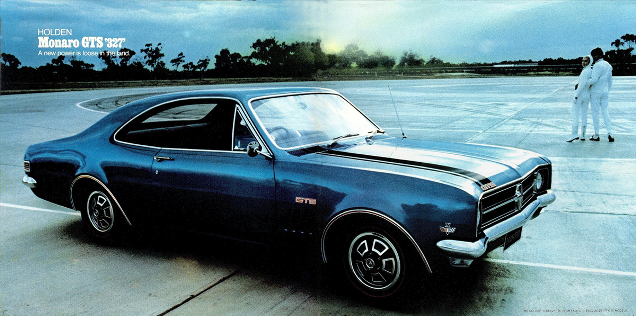There are some great car companies around the world with iconic names to match. The origins of these companies are well known to car enthusiasts, even though many have since been bought out or sold. The Brits have Rolls Royce and Bentley, the Germans have Porsche and Mercedes Benz and the Italians have Ferrari and Fiat, and so on and so forth. These brands evoke images of their country of origin, whether it’s a Silver Shadow majestically passing Big Ben, a Carrera 911 storming down an autobahn near Stuttgart or a Fiat 500 zipping around the Colosseum in search of that perfect espresso.
Here in Australia, we have exactly the same scenario as our European cousins. Holden and Ford have established a proud national heritage too, however the names of some of our car models have a history originating from a culture that itself, has been around for over forty thousand years. And that of course is the Aboriginal culture belonging to the traditional owners of Australia.
A shining example of this is the beloved Monaro, which is Aboriginal for ‘high plain’ or ‘high plateau’. In 1967, Holden was having trouble coming up with a name for its new coupe. But as luck would have it, Noel Bedford, Holden's Technical Designer was on holiday and as he drove through Cooma, he passed the ‘Monaro County Council’.
“It said ‘Monaro County Council' in western-type lettering that reminded me of 'Marlboro Country' and Camaro. It seemed to me so simple and logical. Why didn't somebody think of it before? I was quite excited and couldn't wait to get back to work,” Noel explains. And the rest as they say is history.
Another true Aussie automotive icon is the Holden Torana, which like the Monaro, has its name originating from Aboriginal culture. Meaning ‘to fly’, it also has alternate meanings in other cultures such as Hinduism and Buddhism.
Unfortunately, not every car name with Aboriginal origins becomes an icon. So it was with the Camira. Billed as a “Supercar” in the early 1980s when released, it never really lived up to the hype. As a result, the Camira, meaning ‘wind’, never went on to achieve the status of the aforementioned legends above.
A more recent example of continuing the indigenous theme is the Maloo. John Crennan, the ex HSV Managing Director came up with that one after reading a book on Aboriginal Australians. Released in 1990, the Maloo, meaning ‘storm’ or ‘thunder’, was released in 1990 as a performance ute. It went on to become famous in 2006 when the Z series Maloo R8 broke the world record for the fastest production performance Ute.
Without doubt, these great Aussie auto icons, named after words from one the of oldest, if not the oldest surviving culture in the world, evoke images of our great Australian landscape, just like the European auto icons do in London, Stuttgart or Rome.
